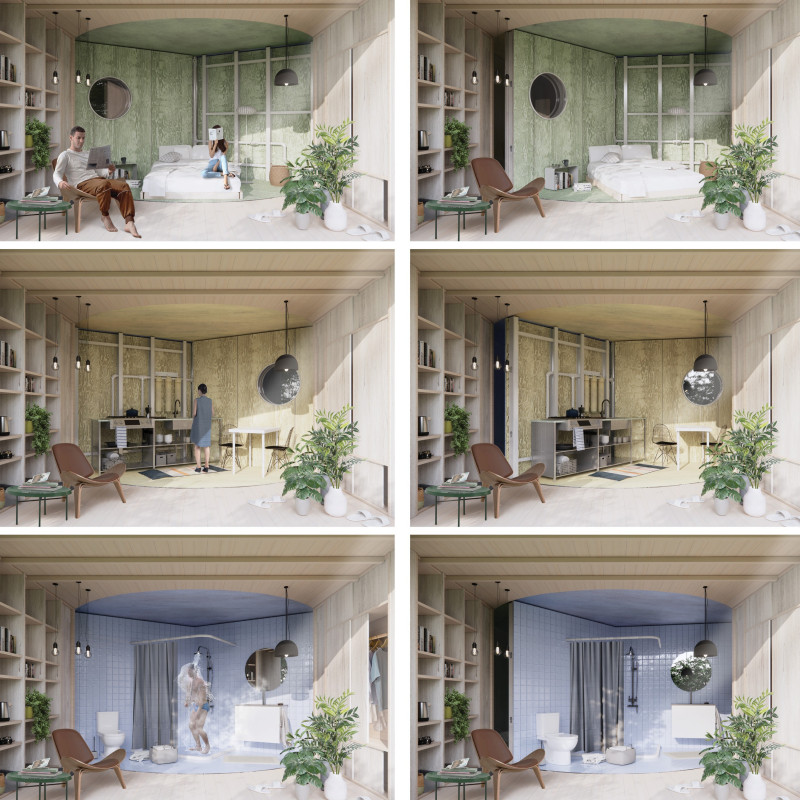5 key facts about this project
The architectural design features a series of interconnected volumes, creating a dynamic relationship between spaces. This configuration allows for a fluid movement throughout the building, ensuring that each area serves its intended use effectively while contributing to an overall cohesive aesthetic. Natural light plays a pivotal role in the project, with large, strategically placed windows offering not only illumination but also breathtaking views of the landscape. The interplay between light and shadow is carefully orchestrated, highlighting the thoughtful detailing present in both the interior and exterior spaces.
One of the central aspects of the project is its commitment to sustainability. The design incorporates environmentally friendly materials and energy-efficient systems, reflecting a growing awareness of ecological responsibilities in contemporary architecture. For instance, the use of reclaimed wood and sustainably sourced stone not only minimizes the environmental impact but also enriches the tactile quality of the spaces. This decision to prioritize sustainable materials contributes to a narrative of resilience and longevity, reinforcing the building’s connection to its geographical context.
The roof design is another element that showcases the project’s uniqueness. Featuring a green roof, the design promotes biodiversity while also enhancing insulation. This approach not only contributes to energy efficiency but also offers the occupants a space for relaxation and recreation. The integration of outdoor terraces encourages engagement with nature, providing both aesthetic and functional benefits. Landscape design is harmoniously interwoven with the architecture, creating a seamless transition between indoor and outdoor environments.
The project’s entry sequence is characterized by an inviting approach, featuring a landscaped path that leads to a grand, yet welcoming entrance. The façade displays a careful composition of materials, incorporating textures that complement the surrounding environment. The use of local stone not only grounds the building in its location but also pays homage to traditional construction techniques while simultaneously embracing modern aesthetics.
Interior spaces are designed with versatility in mind, allowing for flexible configurations based on the needs of occupants. Open floor plans in residential units support varied living arrangements, promoting a sense of community within. The incorporation of communal areas, such as lounges and shared workspaces, reinforces social interaction and collaboration among residents and visitors alike. Careful attention is given to acoustics, ensuring that individuals can enjoy their own space while still feeling connected to the community.
Overall, the project serves as a contemporary interpretation of architectural practices that emphasize sustainability, functionality, and community engagement. Each element of the design is a reflection of the principles that guided its conception, from the material choices down to the spatial organization. As a testament to the evolving landscape of architecture, this project invites exploration and curiosity. To gain deeper insights into its architectural plans, architectural sections, and architectural designs, readers are encouraged to engage with the presentation of the project for a comprehensive understanding of the innovative ideas that have shaped it.























